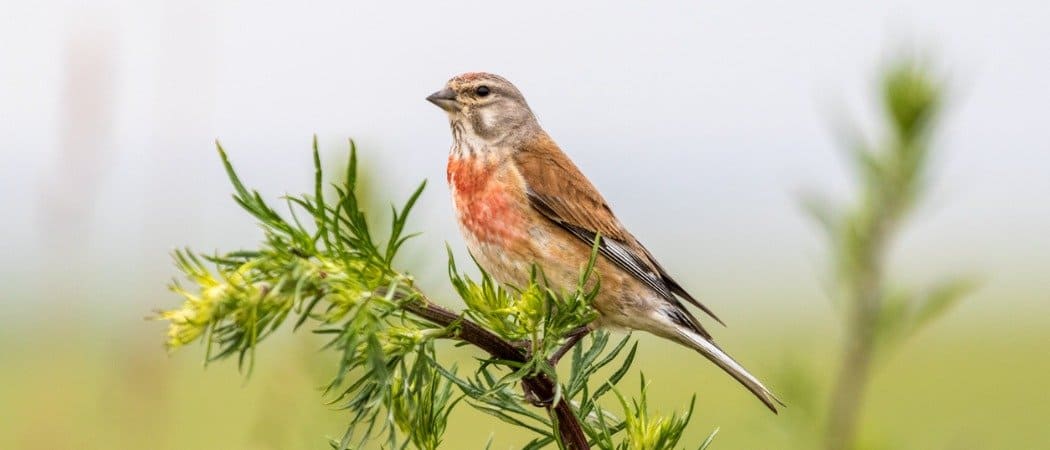Since prehistoric times, birds and their ability to fly has been a constant source of wonder for humans. Whether in cave paintings, fantasy fiction, or mythology and symbolism, birds have been granted a special place in our minds. Take for example the story of Icarus, whose father fashions wings and they fly away, which goes on to show the fascination we feel about the ability to fly.
However, another thing we admire about birds is the sweet songs that they sing. Birds sing for many reasons. They do it to communicate with each other, attract mates, establish their territory, and greet each new day. A bird’s songs range from crowing, chirping, and cackling to a sweet, unforgettable melody.

Why Do Birds Sing?
If you’ve ever been captivated by the chirping and calling of birds in your garden, you may have wondered what they were trying to communicate. Here are some ideas:
Mark Their Territory
Many birds use their songs as a warning call to other birds. They use their calls to declare that a certain territory is theirs. Birds have different needs for the size of their territory, but every bird needs a place to find food, water, shelter, and mates. Once a male bird has successfully set up a home, he can begin attracting females.
Attract Mates
In most bird species, males are better singers because they use their songs to attract females. Females often choose the best singer from the group, so this is an important skill. Birds learn how to sing from each other, and they practice singing until they are ready to mate. Some gifted birds have hundreds of songs under their belt, and some can imitate other birds. In most cases, years of experience and imitation mean that older birds have the most complex, beautiful songs.
Mark The Passage Of Time
Birds sing a different melody at different times of the day and night. Their calls seem to change depending on when they are singing. In the morning, their voices carry the furthest, which is why they mostly sing at dawn.
Scientists theorize that they also use dawn singing to announce to each other that they have made it through the night.
Birds often sing at the end of the day. This melody is typically less vibrant than their morning song. Some birds sing at night. These include owls, mockingbirds, whippoorwills, and nightingales.
For Fun
Birds also sing simply because they enjoy it. The ability to shape melodies is a gift, and they enjoy showing it off. They enjoy practicing, learning new songs, and filling the air with their voices.
Whatever their reasons are, birds create some of nature’s most exquisite sounds. A bird melody is a lovely sound that you should listen to every chance you get.
Our Top 10
Some birds stand out for their tuneful, beautiful songs. Who are these gifted singers of the bird world? We’ve found the top 10 birds that sing more beautifully than all others.
#10: Blackbird

The Beatles wrote a song commemorating the low-pitched, beautiful songs of this dark purple bird. Paul McCartney later said the song was about the Little Rock Nine, the students who attended an all-white school at the height of the Civil Rights movement. There is no question the bird’s sweet song was also an inspiration. The blackbird (Turdus merula) is a member of the thrush family that is commonly seen in gardens in the United Kingdom. It is native to Europe, Russia, and North Africa.
#9: Northern Mockingbird
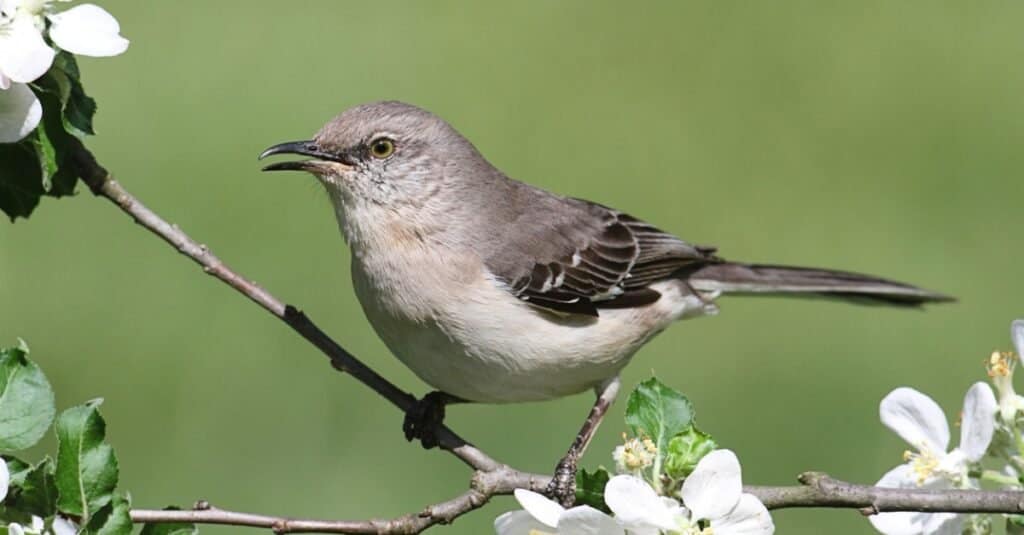
This lovely bird (Mimus polyglottos) with long tail feathers and a pointed beak is common throughout the United States. In some bird species, males are the most accomplished singers, but both female and male mockingbirds are accomplished crooners. Their ability to imitate the songs of other birds is amazing. They also sing at night, which is unusual for birds. The beautiful songs of northern mockingbirds are some of the most studied bird songs in the world.
#8: Brown Thrasher

With more than 1,000 to choose from, the brown thrasher (Toxostoma rufum) has more beautiful songs in its repertoire than any other bird. Native to the eastern and central states of the United States, this bird hides in shrubs and thickets.
As warm weather approaches, male thrashers climb to the tops of trees to release their gorgeous melodies into the air. Some ornithologists have said that brown thrashers are better singers than northern mockingbirds, with songs that are “richer, fuller and definitely more melodious.” Whether this is true, the fact is that both birds are wonderful warblers.
#7: Blackcap
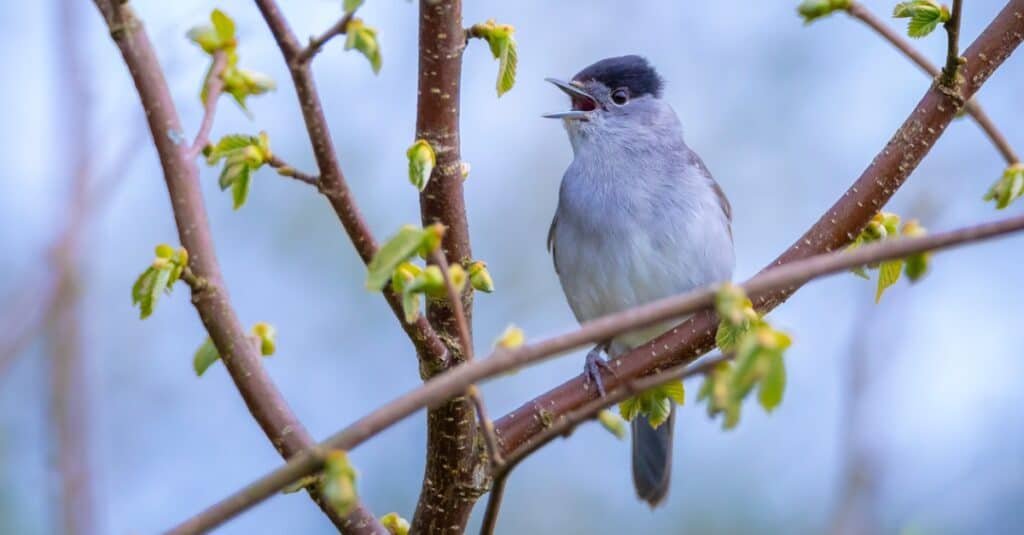
Sometimes called the “northern nightingale,” this is a bird species where the male lays claim to the best singing. This member of the warbler family shares the family’s talent for warbling and chirping.
The male blackcap (Sylvia atricapallia) has a dark cap on a pale gray body. Females have the same gray body with a bright red cap. Blackcaps live in most countries in Europe, and they are regular summer visitors to gardens in the United Kingdom. They live in woodlands, parks, and gardens.
#6: Summer Tanager
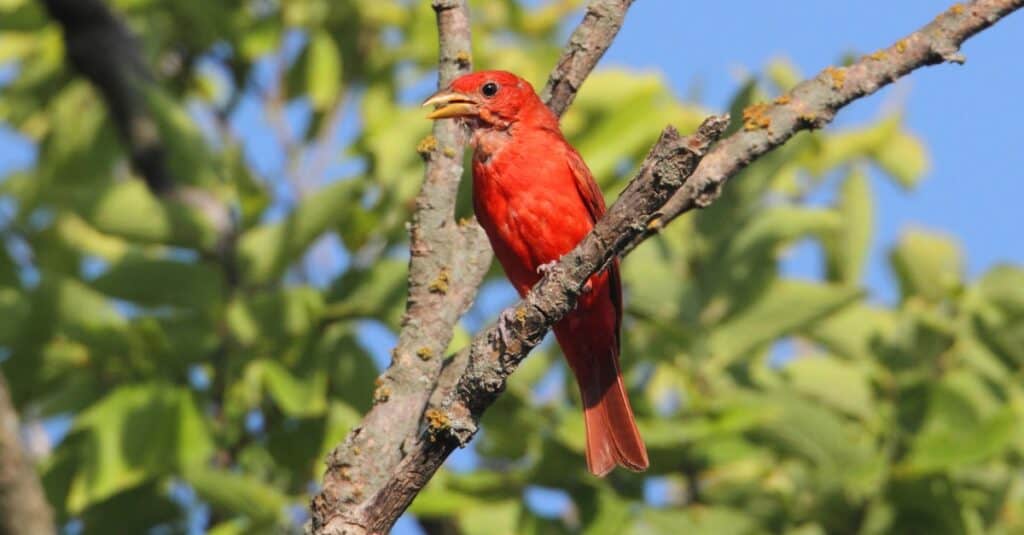
The brightly colored tanager (Piranga rubra) is unusual in the bird world. While other species stop singing in the summer, the summer tanager starts singing to herald the arrival of warm weather. Male tanagers are bright scarlet all over, and they are the only truly red bird in North America. Female tanagers are bright yellow. Summer tanagers live high in the treetops and are specialists in catching bees and wasps.
#5: Canary
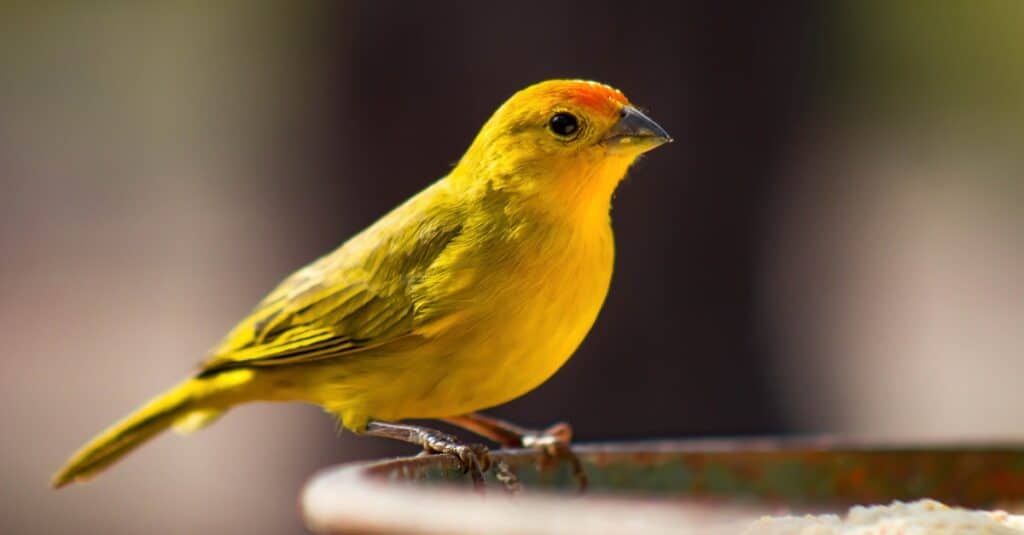
Named for its native islands, this small bird (Serinus canaria) with a big voice has been a popular pet for centuries. Its lemony yellow feathers and bright beak add to its charm. The best singers of the canary family are the roller canary and American singer canary. The canaries can imitate musical instruments and human voices to produce a wide repertoire of songs. They often decorate their songs with tuneful chirping and other noises. The canaries sing in all seasons except summer.
#4: Song Thrush
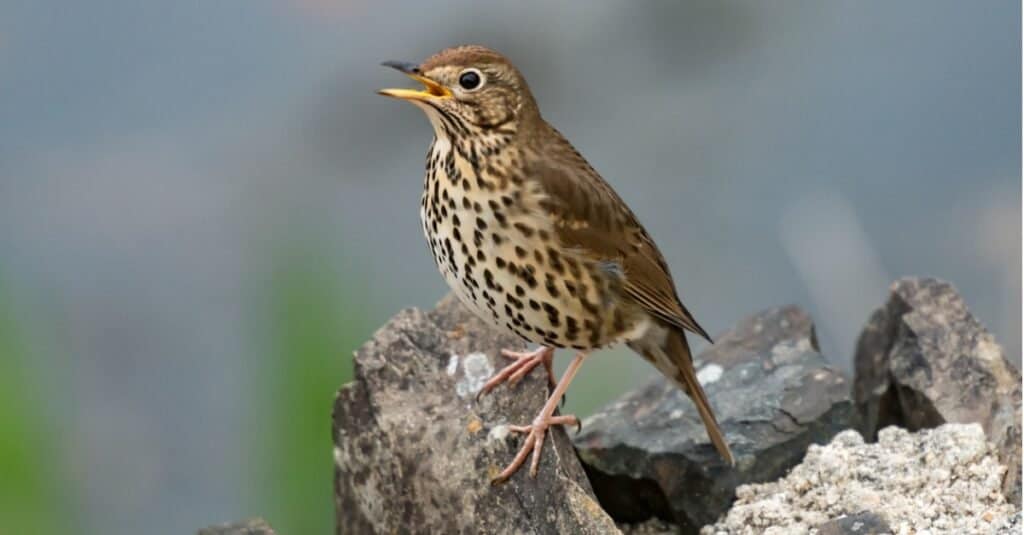
This bird’s many beautiful tunes have inspired songs, stories, and poems. The spotted, pretty bird (Turdus philomelos) with a wide beak can sing a string of many melodies. In between songs, it often erupts into harsh calls. Song thrushes have their own repertoires, but they can also imitate the songs of other birds. They are migratory birds who spend their winters in southern Europe, North Africa, and the Middle East.
#3: Linnet
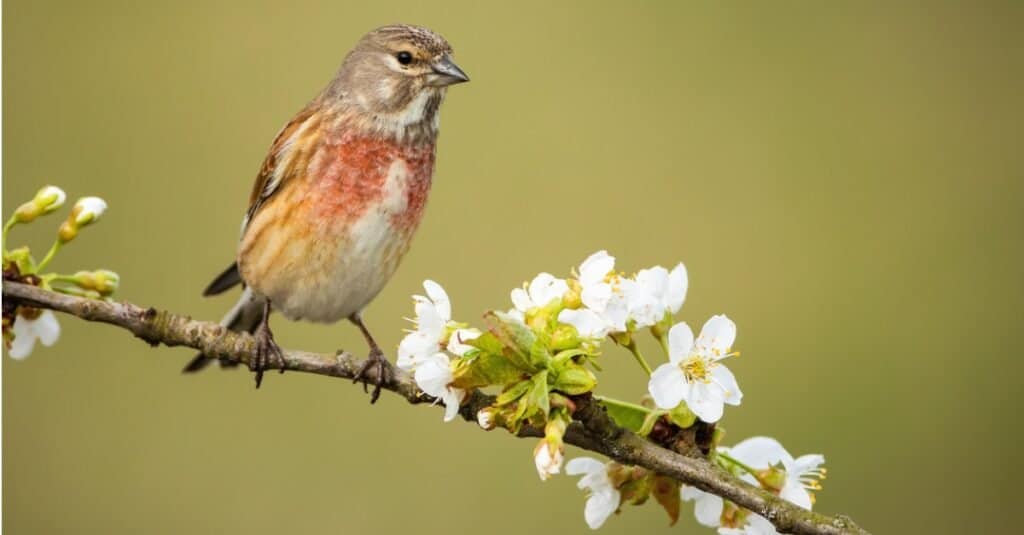
The phrase “to sing like a linnet” was once a common saying. It’s easy to understand when you listen to the soft, sweet song of this finch (Linaria cannabina). The linnet adds accomplished thrills and runs to its many songs. Linnets are named for their favorite food, which is flaxseeds. They are native to Europe.
#2: Hermit Thrush
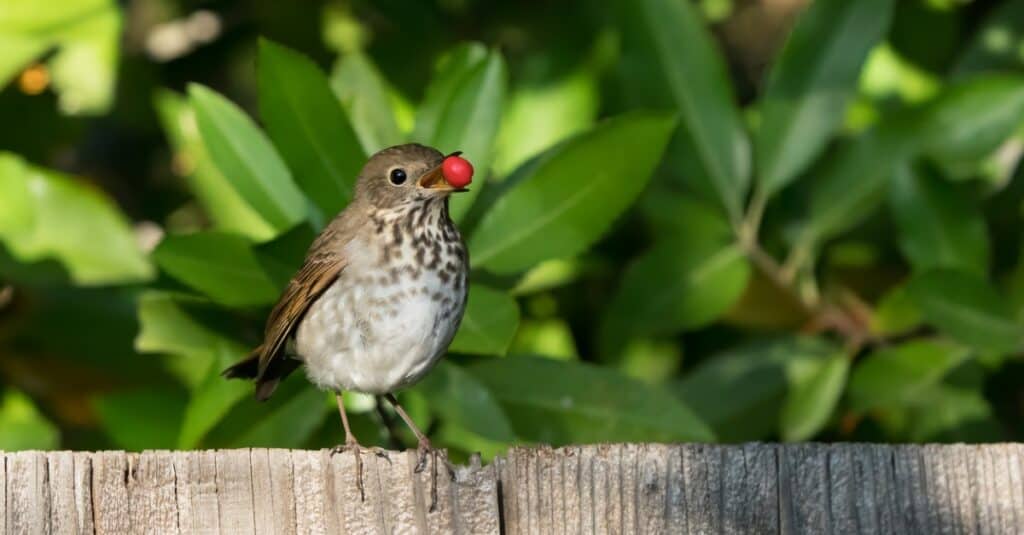
What the small, rather plain hermit thrush (Catharus guttatus) lacks in looks, it makes up for in talent. This bird’s call sounds like a wonderfully played flute. Most thrushes are wonderful singers, but this bird’s song is truly melodious. Hermit thrushes are native to most of the United States. Hermit thrushes prefer forested areas near berry-bearing plants.
#1: Nightingale
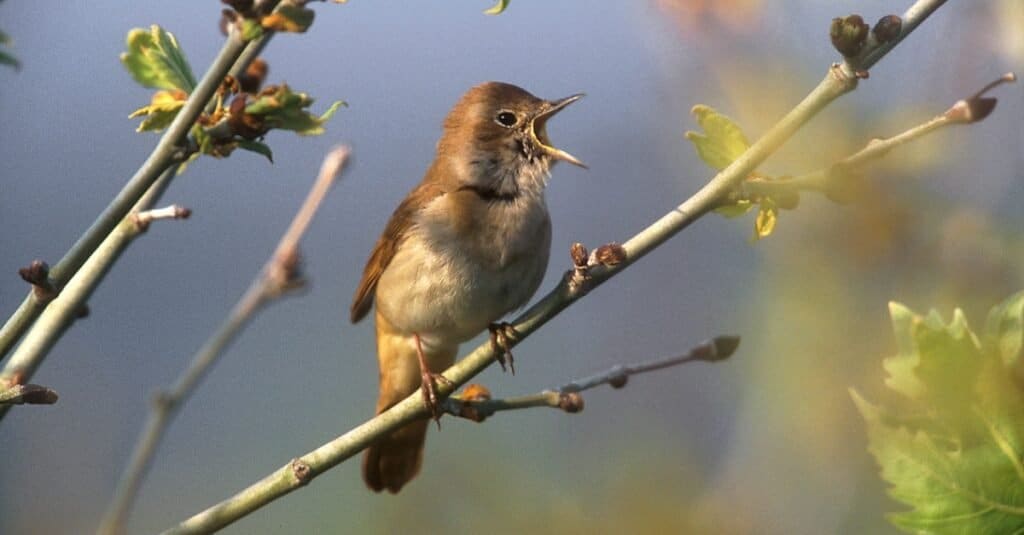
Few birds have inspired as many stories and poems as the nightingale (Luscinia megarrhynchos). This small passerine has enchanted listeners for centuries with its sweet melody. Once considered a member of the thrush family, ornithologists now place the nightingale in the Old World flycatcher family. The nightingale is native to Europe, Asia, and the Middle East. It is the official national bird of Ukraine and Iran.
Summary Of The 10 Birds That Sing The Most Beautiful Bird Songs In The World
| Rank | Bird Name |
|---|---|
| 1 | Nightingale |
| 2 | Hermit Thrush |
| 3 | Linnet |
| 4 | Song Thrush |
| 5 | Canary |
| 6 | Summer Tanager |
| 7 | Blackcap |
| 8 | Brown Thrasher |
| 9 | Northern Mockingbird |
| 10 | Blackbird |
3 Birds That Also Have Beautiful Songs But Didn’t Quite Make the List
There are three well-known birds that are named after the songs they sing:
- The Northern Bobwhite is a type of quail named for its whistling call that moves up in pitch and clearly says “bobwhite! bobwhite!” There are 20 subspecies of Northern Bobwhites, and they are a popular game bird.
- The Killdeer is a North American plover, a shorebird living near water to feed and mate, but it nests inland. A brown and white bird with two black bands across its chest, the killdeer is known for its shrill whistle, a two-syllable cry that sounds like “kill-dee, kill-dee, kill-dee.”
- The Common Poorwill is a nocturnal bird of the nightjar family and the only bird known to go into torpor for weeks or months. When awake, its call sounds as if it is saying, “poorwill, poorwill, poorwill.”
Thank you for reading! Have some feedback for us? Contact the AZ Animals editorial team.

